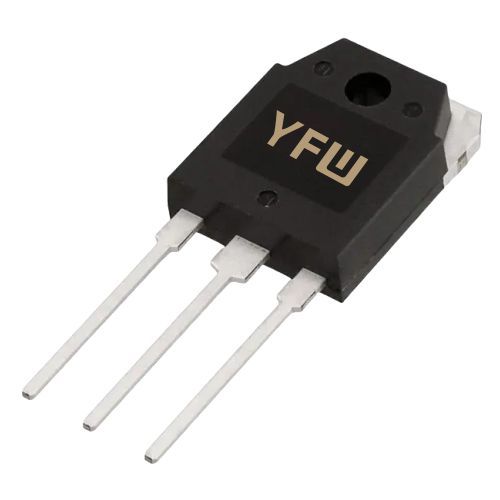How to Test Thyristors (Silicon-Controlled Rectifiers)?
Date:2025-06-18 Categories:Product knowledge Hits:831 From:Guangdong Youfeng Microelectronics Co., Ltd
Digital Multimeter (DMM): Equipped with ohmmeter (20kΩ–200kΩ ranges) and diode test mode.
Test Leads with Alligator Clips: For secure terminal connections.
Isolated Power Supply (for In-Circuit Tests): To safely apply bias voltages.
Breadboard or Test Socket: For off-circuit evaluations.
Thyristors typically have three terminals: for SCRs, these are anode (A), cathode (K), and gate (G); TRIACs feature main terminals MT1, MT2, and gate (G). Always refer to the datasheet for pin configurations to avoid misconnection.
Testing a thyristor outside the circuit eliminates parallel component interference, providing accurate results.
Testing on a populated PCB requires caution to avoid damage from residual voltages or parallel components.
Power Off & Discharge:
Preliminary Short Check:
Measure A-K (for SCR) or MT1-MT2 (for TRIAC) resistance with the gate unpowered.
Fault Sign: Low resistance (<1kΩ) suggests a shorted device; isolate by lifting one terminal from the PCB for confirmation.
Triggering Under Bias:
Apply a small voltage (e.g., 5V) to the gate through a 1kΩ resistor (relative to the cathode/MT1).
Healthy Response: Voltage across A-K (or MT1-MT2) drops from supply voltage to <1V (saturation), indicating proper conduction.
Fault Sign: No voltage drop or excessive voltage (>2V) signals a failure to trigger, possibly due to a broken gate or internal junction damage.
Commutation Check (for GTO/IGBT Thyristors):
Always test high-voltage thyristors (>500V) with caution; use insulated probes and ensure the circuit is fully de-energized.
For power devices, verify heat sink attachment and thermal paste integrity, as overheating is a primary failure cause.
When replacing a faulty thyristor, match voltage (VDRM, VRRM) and current (IT(AV)) ratings per the datasheet to avoid premature failure.
Testing thyristors requires methodical checks of their terminal junctions and triggering behavior, distinguishing between unidirectional (SCR) and bidirectional (TRIAC) types. Off-circuit tests with a DMM’s ohmmeter and diode mode provide precise component-level diagnosis, while in-circuit tests validate functionality within the system. By following these steps, engineers can identify shorts, opens, or triggering failures early, ensuring reliable operation in high-power applications. Whether maintaining industrial equipment or troubleshooting renewable energy inverters, thorough thyristor testing is key to preserving circuit integrity and safety

Previous:
Classification, Structure, and Principle of MOSFET
Next:
Characteristics, Working Principle, and Key Parameters of Unidirectional Thyristors (SCRs)